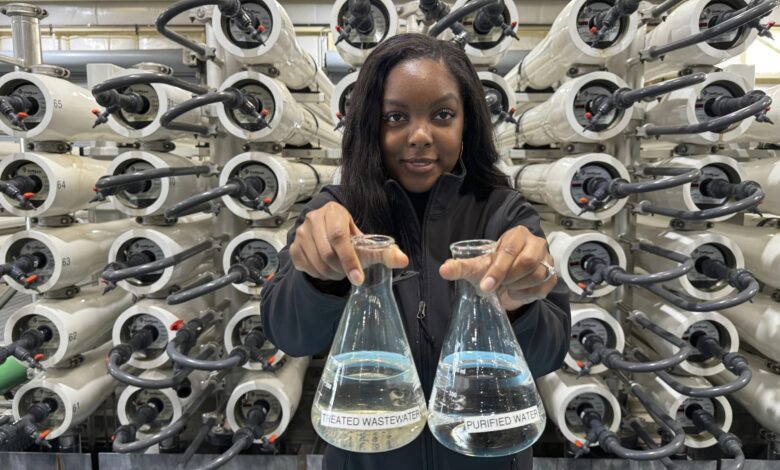
Lakeisha Bryant, public information representative at the Santa Clara Valley Water District, holds flasks of water before and after it is purified at the Silicon Valley Advance Purification Center, Wednesday, December 13, 2023. Photo Credit: AP Photo/Terry Chea
HealthSociety USARecycling Wastewater into (Quality!) Drinking Water
Highly subjected to droughts, California, the United States, has greenlit the recycling of wastewater, thus turning it into drinking water for homes, schools, and businesses and securing reliable sources of potable water for more than 39 million citizens.
“Water is so precious in California,” states Jennifer West, managing director of WateReuse California, a group advocating for recycled water. “It is important that we use it more than once.”
Two decades ago, such projects would receive severe backlash, so adopting these new rules signals a shift in public opinion. California follows in Colorado’s footsteps by allowing water agencies to treat wastewater and return it to the drinking water system. Wastewater has been recycled for decades but used to create ice rinks and snow, water crops, irrigate parks and playing fields. It took more than a decade to develop the strict rules applying to recycling wastewater – different from regular water treatment rules – which required multiple reviews by independent panels of scientists. For instance, all pathogens and viruses must be treated, even those not present in wastewater. The treatment is so stringent that it removes all minerals, so they must be added back at the end of the process. “It’s at the same drinking water quality, and probably better in many instances,” explains Darrin Polhemus, deputy director of the drinking water division for the California Water Resources Control Board.



